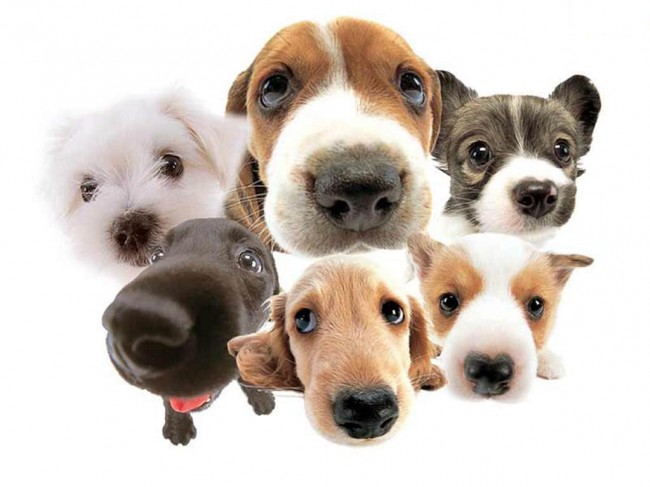
Though it is not precisely known how dogs came to be domesticated, fossils that have been excavated from historical sites prove that dogs, or their ancestors, walked the earth more than fifteen thousand years ago! It is believed that this species first developed from the Canidae family and then slowly evolved from the wolf, which still hunts and thrives in the wild. The similarities are uncanny because wolves just seem to be a larger version of the dog breed. What is still a mystery to those historians trying to unravel the past is exactly how the dog got domesticated.
Through research done from civilizations that thrived on the earth thousands of years earlier, it is believed that man and wolf may have crossed paths several times and probably hunted each other for food. When man discovered that wolves could hunt for meat successfully and also bear heavy loads, man decided to capture and tame the wildlings for his own use. This is probably the best way to understand how dogs got to be a part and parcel of home life in today’s domesticated world. A good example is the book White Fang by Jack London that involves the story of a young wolf who is separated from his pack and gets captured by humans first for domestic purposes, such as pulling a sled and protecting the clan and is then captured and used in dog fights for entertainment. Of course, like most stories, he lands up in the hands of a kind man who finally tames his wild ways and White Fang then morphs into a house dog that “settles down”, starting a family and protecting his beloved owner. This may just be a story written by a brilliant storyteller, but it does have some insight and truth to what could have been the final domestication of the canine.
When it comes to the various sizes and breeds that we now see today, there are other theories as well. One of the most popular beliefs is that due to climate changes and the natural evolution of various species throughout the ages, even the dog evolved and eventually became the size it is today. Also, the climate that a particular breed of dog thrives in would determine the thickness of fur, width of its head, height and other features. Also, there may have been interbreeding of species within and without the canine family. This is also a plausible explanation. Other theories do exist, but none of them can be taken at face value because none of them can be proved. What’s left to be seen is the future revelation of dog breeds as new scientific developments take place that can make the impossible quite fascinatingly possible.
The past may be seem bleary and theorized, but the future of dogs is bright and will unravel new breeds as scientists are now developing “hybrid” dogs and interbreeding of the species. No matter what your dog may look like on the exterior, they all still have a heart and continue to remain “man’s best friend”, looking for unconditional love and appreciation from those in whose care they have entrusted themselves. It is always important to remember that no matter where your pet has come from, who may be its ancestor or how it developed its features, it always deserves the utmost care and love that you could offer!
Do you like this article? Have anything to say about it? Maybe you have some more information on the History and Evolution of Dogs? Comment below and share it with us and with the world!
